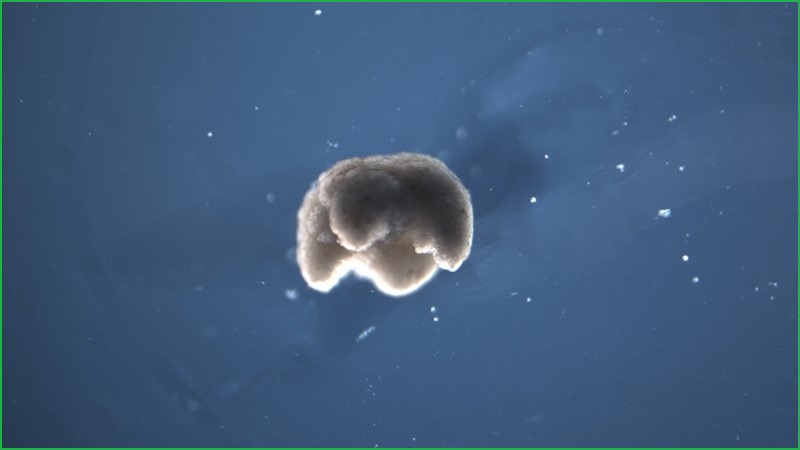Researchers have built what they call the world’s first living robots using tissue from frogs.
A team from the University of Vermont and Tufts University published the remarkable results of their project last week in a study that explores the intersection of computer science and biology.
The final designs of these living organisms took place using the Deep Green supercomputer cluster that the University of Vermont boasts “can achieve speeds of over 1 petaflop, or one thousand million million computations per second, the equivalent of 20,000 laptop computers working in tandem”.
Even with that much processing power, it took months for Deep Green to construct and reconstruct the cells in a simulation mirroring the rules of biophysics.
Given a set of objectives – movement, the ability to transport and manipulate objects, and collective behavior – the algorithm simulated the assembly of frog cells into different shapes and structures, slowly evolving its designs until researchers were satisfied with the output.
Biologists then constructed the organisms based on the algorithm’s design.
Groundbreaking study
Co-leader of the research, computer science professor Josh Bongard, said the resulting organisms are unlike anything seen before.
"These are novel living machines,” he said. “They're neither a traditional robot nor a known species of animal. It's a new class of artifact: a living, programmable organism."
No bigger than a pin-head, the living robots – also called ‘xenobots’ – are a combination of cells from frog heart muscles (which contract for movement) and skin tissue (for structure).
The team’s other co-leader, biology professor Michael Levin, said the development of the xenobots show progress in understanding some of life’s more complex questions.
"You look at the cells we've been building our xenobots with, and, genomically, they're frogs. It's 100% frog DNA—but these are not frogs. Then you ask, well, what else are these cells capable of building?"
“As we've shown, these frog cells can be coaxed to make interesting living forms that are completely different from what their default anatomy would be."
Levin also outlined some of the potential uses for the xenobots.
“We can imagine many useful applications of these living robots that other machines can't do like searching out nasty compounds or radioactive contamination, gathering microplastic in the oceans, travelling in arteries to scrape out plaque,” Levin said.
Bongard said programming organisms in this way has benefits over traditional machines – especially given that they can repair themselves – even if the robots don’t last as long.
“The downside of living tissue is that it's weak and it degrades," Bongard said. "That's why we use steel. But organisms have 4.5 billion years of practice at regenerating themselves and going on for decades.
“These xenobots are fully biodegradable when they're done with their job after seven days, they're just dead skin cells."
Ethical issues
But potential misuse of the xenobots has brought worry about the dangers of unchecked scientific development.
In an article on the The Conversation, digital ethicists at the University of Melbourne, Simon Coghlan and Kobi Leins, outlined some of the potential concerns about building programmable organisms.
“Xenobots might be used for hostile biological purposes prohibited under international law,” Coghlan and Leins said.
“More advanced future xenobots, especially ones that live longer and reproduce, could potentially ‘malfunction’ and go rogue, and out-compete other species.
“For complex tasks, xenobots may need sensory and nervous systems, possibly resulting in their sentience. A sentient programmed organism would raise additional ethical questions.”










